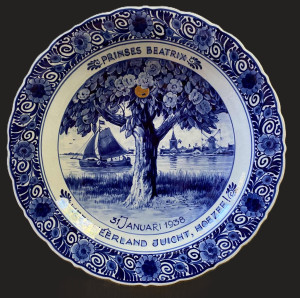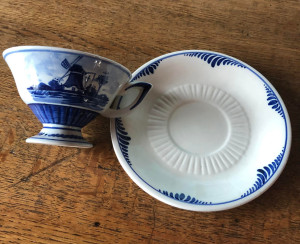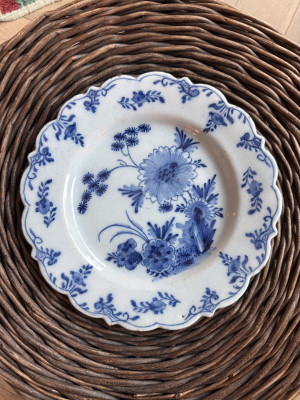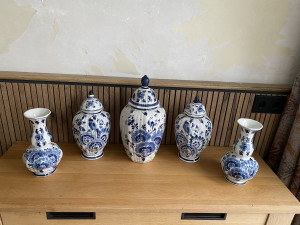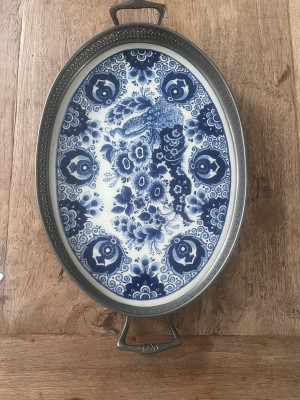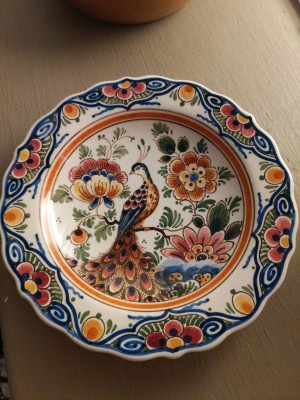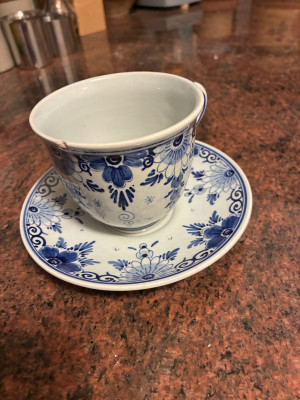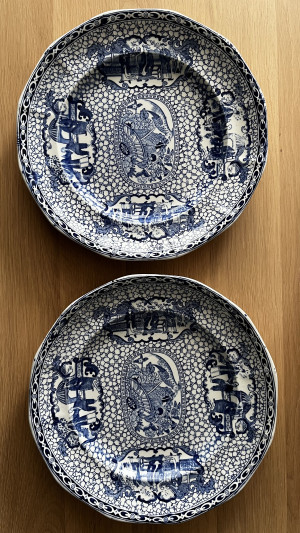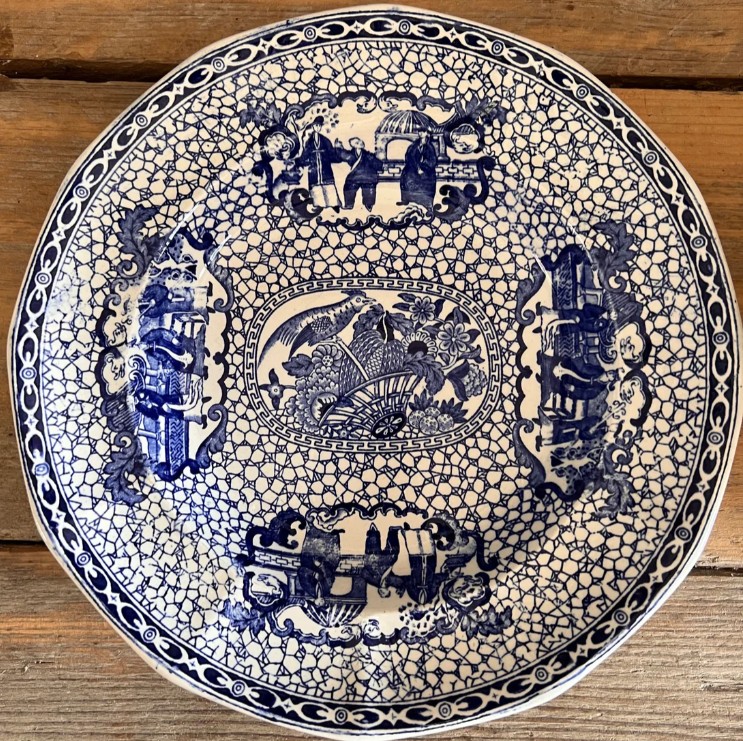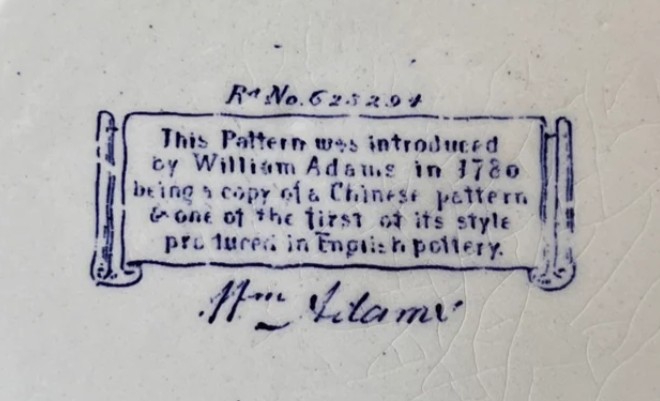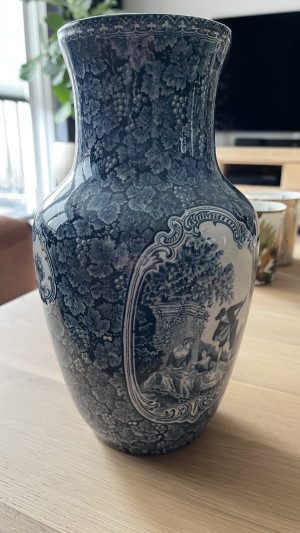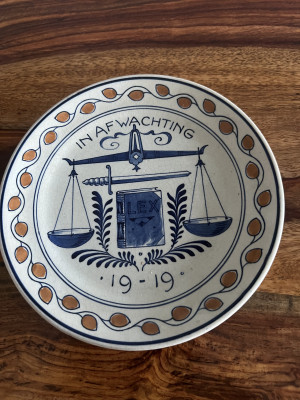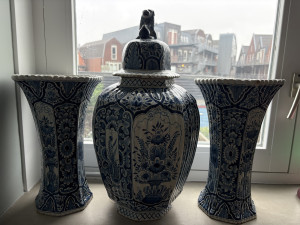Gedeelde publieksvoorwerpen
Laatste reacties
mijns inziens ok. Datering: 1657-1803.
Zie ook : https://delftsaardewerk.nl/merk/een-bijltje
Zie hieronder een bordje uit dezelfde periode
mvg Franky
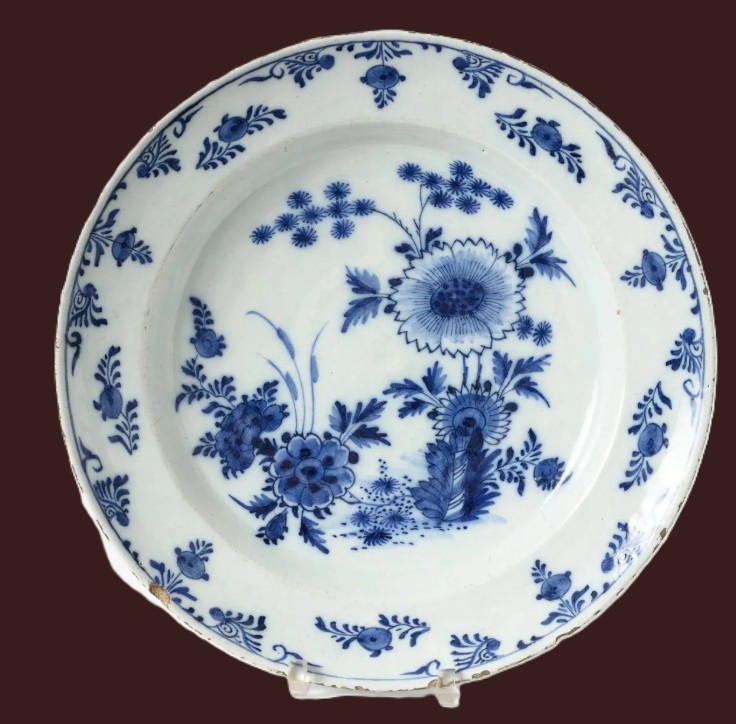
Dit is een kaststel van een kleiner atelier. Waarschijnlijk laat 20ste eeuw. Zonder zekerheid maar met vermoeden gemaakt door ( of voor) Kooy.
CAK ( of CKA) staat voor C.A. Kooy (soms ook geschreven als Kooy of Kooy Delft).
Het gaat om een 20e-eeuws atelier/handelaar dat Delfts blauw in traditionele stijl liet maken en verkopen. Er is helaas geen gedocumenteerde vestiging of fabriekspand bekend. Ze voerden geen vast ( geregistreerd ) merkteken.
mvg Franky
Gemaakt door Velsen- Sassanheim (VLs). De fabriek heeft een rijke geschiedenis onder verschillende namen:
1920–1942: Gevestigd in Velsen (als Potterie Kennemerland), bekend om strakke Art Deco ontwerpen.
1942–2002: Gevestigd in Sassenheim (onder de naam Keramiekfabriek Velsen). In deze periode verschoof de focus meer naar het commerciële Delfts aardewerk, zoals uw exemplaar.waarschijnlijk gemaakt in de jaren 50 of 60. Gebaseerd op de volgende details:
De samenwerking met Kurz: Het bovenste stempel ("Kurz Edeltin") verwijst naar de firma C. Kurz & Co uit Tiel, die gespecialiseerd was in tinnen randen en monturen. Deze samenwerking, waarbij keramische tegels of plateaus door Kurz in een tinnen frame werden gevat, was vooral populair in de naoorlogse periode (ca. 1945–1970).
Bij de fabriek in Sassenheim stond het nummer 922 specifiek voor de ovale vorm van de keramische plaat (het 'tableau'). Dit nummer werd gedurende de jaren 50 en 60 standaard gebruikt voor deze specifieke maat, zodat de firma Kurz uit Tiel precies wist welke tinnen montuur (de rand en handvatten) eromheen paste.
Hoewel dergelijk Delfts blauw aardewerk uit deze periode vaak werd gezien als "seriewerk", was er bij Velsen een hoofdverantwoordelijke voor de decoraties: Eelke Kurpershoek: Hij was de artistiek leider en hoofdontwerper bij Velsen in Sassenheim tijdens de bloeitijd van deze producten (vanaf de jaren 40 tot in de late jaren 60). Niet handgeschilderd doch transfertechniek. Handwerk betekent dat de transfer met de hand werd aangebracht.
mvg Franky
Als antwoord op Dag Franky, ik ben de… door IngeborgV
Dag Ingeborg, Hij zou ook voor de Porceleyne fles geschilderd hebben van 1976 tot 1987. Het is mij ook niet helemaal duidelijk of het twee verschillende periodes waren of dat hij voor beide werkzaam was.
Dit is wat ik kon terugvinden; Over de plateelschilder H. Verwey (of Verweij) is bekend dat hij een van de ambachtslieden was die de overstap maakten tussen verschillende plateelbakkerijen in de 20e eeuw. Dit kwam vaker voor in de Delftse aardewerkwereld, waarbij schilders hun expertise meenamen naar verschillende ateliers. Hij signeerde met HVy, HV. en soms H.Verweij voluit. Hieronder een voorbeeld van een bord van zijn hand. Geschilderd in 1976.
hopelijk heb je hier iets aan.
mvg Franky
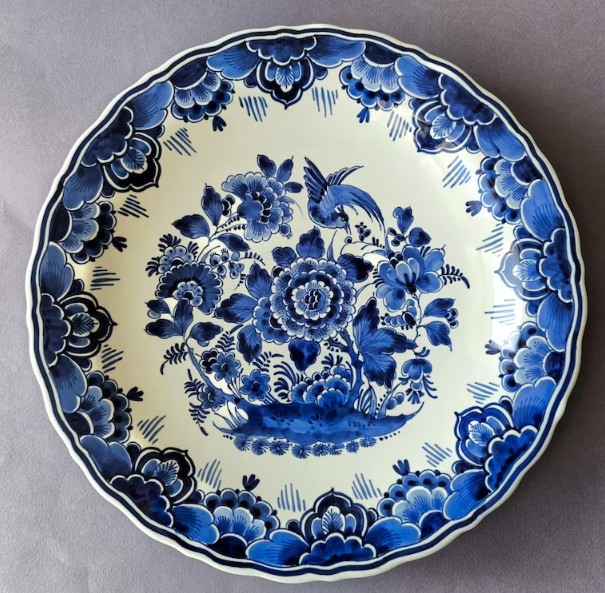
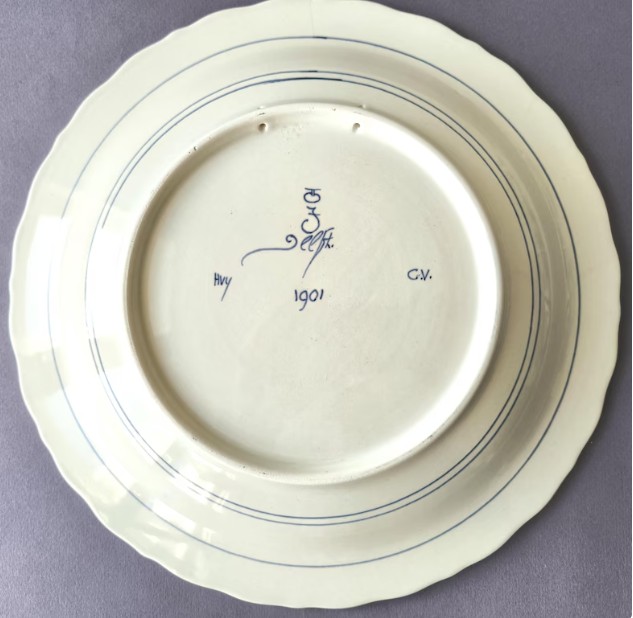
Dit is van plateelbakkerij Schoonhoven. Beide door een andere schilder geschilderd doch veel is mij niet bekend van de schilders daar er niet echt een register is van bijgehouden. Iemand hier weet er zeker meer over.
mvg Franky
Helaas geen Delft.
Dit is een prachtig voorbeeld van een klassiek Brits transferware (overdrachtdecoratie) bord.
Dit bord is geproduceerd door de beroemde Engelse pottenbakkerij William Adams & Sons uit Staffordshire. De familie Adams is een van de oudste en meest bekende namen in de Britse keramiekgeschiedenis.
Het specifieke merk op de achterkant geeft aan dat dit een reproductie is van een veel ouder ontwerp. Hoewel onduidelijk luidt de tekst op de stempel luidt waarschijnlijk:
"This pattern was introduced by William Adams in 1780, being a copy of a Chinese pattern & one of the first of its style produced in English pottery."
Hoewel het lijkt op het bekende "Willow"-patroon, is dit een specifiek Adams-ontwerp. Het kenmerkt zich door de centrale cirkel met Chinese taferelen, omringd door vier reserves (vensters) op de rand die ook verschillende scènes tonen.
Hoewel de tekst verwijst naar 1780, is dit bord zelf niet uit die tijd. De stempelstijl en de manier waarop de tekst is geformuleerd duiden op een productie in de late 19e eeuw of het begin van de 20e eeuw (waarschijnlijk tussen 1890 en 1920). In die periode was er een grote herwaardering voor de vroege ontwerpen van de fabriek. hieronder een zelfde bord in grotere resolutie.
Het was een gebruiksgoed dus zijn er ontbijtbordjes, diepe en platte enz..
mvg Franky
Helaas geen Delft. Dit is een authentieke Ludwig Wessel (Bonn) vaas uit de "Rhein"-serie met een afbeelding van de ruïne Ehrenfels. Het is een mooi stukje Duits historisme dat de romantiek van de Rijn uit het einde van de 19e eeuw vastlegt.
Gebaseerd op het merklogo en de stijl van de vaas, is deze waarschijnlijk geproduceerd tussen 1890 en 1910. Dit was de hoogtijdagen van het "Rijn-toerisme", waarbij dergelijke vazen als luxe souvenirs of decoratiestukken werden verkocht.
De gekroonde "W" met de letters "L" en "P" (en soms "B") staat voor Ludwig Wessel Poppelsdorf (een wijk in Bonn).
mvg Franky
Als antwoord op Goedemorgen Franky, dit… door jolanda1
Dag Jolanda, helaas is dit geen platform waar waarden, prijzen en/of biedingen worden gedaan. Staat het op marktplaats of zo dan vind ik het wel.
mvg Franky
is uit een reeks van 10. Heb eventueel wel interesse.
mvg Franky
Als antwoord op Rond welke eeuwwisseling?… door Jan van den Heuvel1627
Dag Jan,
Ik ga uit van het merkteken dat vrijwel overeenkomt met werk van Jacobus ter Zweege die in loondienst kwam in 1891 en er werkte tot ongeveer 1915.vandaar " rond" de eeuwwisseling. Komt niet op een jaartje aan hé 😊. Alvast een fijn eindejaar en een jaar vol vondsten gewenst voor 2026.
groet Franky
